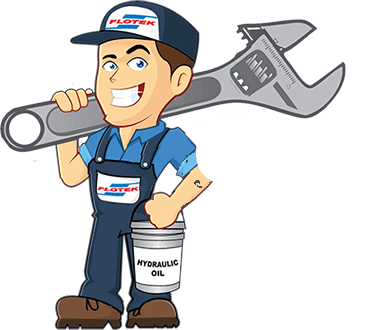Stay Safe with These Hydraulic Pump Repair Tips

Repairing a hydraulic pump isn’t a straightforward task, but it may be done if the proper knowledge and tools are used. This blog post will discuss a number of the most effective ways to get your hydraulic pump repaired without hiring a knowledgeable person. Keep reading for more!
WHAT IS A HYDRAULIC PUMP?
Hydraulic pumps are used to pressurise fluid and move it through hydraulic systems. This is often done by converting rotary motion into reciprocating or oscillatory action during a crescent-shaped tube called the swash plate, which can be adjusted throughout its range of travel.
There are different types of Hydraulic pumps listed below;
Gear pump – a pump that uses the meshing of gears to pump fluid by displacement.
Piston Pump – a sort of positive displacement pump that uses pistons driven by a motor.
Reciprocating Pump – Uses the piston action to attract and repel fluid. A quite common problem with these pumps is leaking seals or gaskets, this will result in costly repairs and downtime if not handled properly. Another issue we see is rust.
Vane pump – a sort of positive-displacement pumps that use vanes to attract and expel fluid.
Screw pump -is used for pumping thick, sticky materials like molasses, adhesives, pastes or paints with particles starting from coarse granules all the way down to fine
Clutch pump – a hydraulic clutch pump is a belt-driven pump that may be used rather than an influence takes off for a few applications, wreckers and bucket trucks, and is necessary on trucks without a power take-off aperture on the transmission
Dump Pump – a vane pump that is used to move liquids and slurries. Its an outsized hopper-like bowl on top, which forms an enclosed space where the material being pumped collects until it’s pushed out through a nozzle by compressed air or hydraulic pressure
Bucket Pump -a heavy duty screw type positive displacement pump with two screws in series up
MALFUNCTIONS ON HYDRAULIC PUMPS
A malfunctioning hydraulic pump can cause a variety of problems, starting from leaks to seized pistons. One of the most common faults with hydraulic pumps are air and water contamination which are the leading causes of hydraulic failure, accounting for 80 to 90% of hydraulic failures, Temperature problems where the fluid overheats and can cause a spread of problems from worn seals to melted swash plates.
Low discharge pressure is usually caused by cavitation in the pump – bubbles forming on sharp edges and collapsing inside the system. Cavitation also causes high wear rates and reduces equipment life dramatically. Fluid Levels and Quality and lastly is Human Error.
BEST WAY TO REPAIR A HYDRAULIC PUMP
One among the most effective ways to repair a hydraulic pump is by using an air compressor. An air compressor uses pressurised air together with compressed fluid to form pressure within the system, which is able to help provide power for machines and may be used as a replacement for pumps that are damaged or broken.
Depending on the unit, almost every constituent part is often replaced or repaired, provided an appropriate replacement is obtainable. As a general rule, a repair is sensible if the value doesn’t exceed 60 to 70% of the cost of a brand new component. Beyond that, the user is usually comfortable with a replacement unit.




